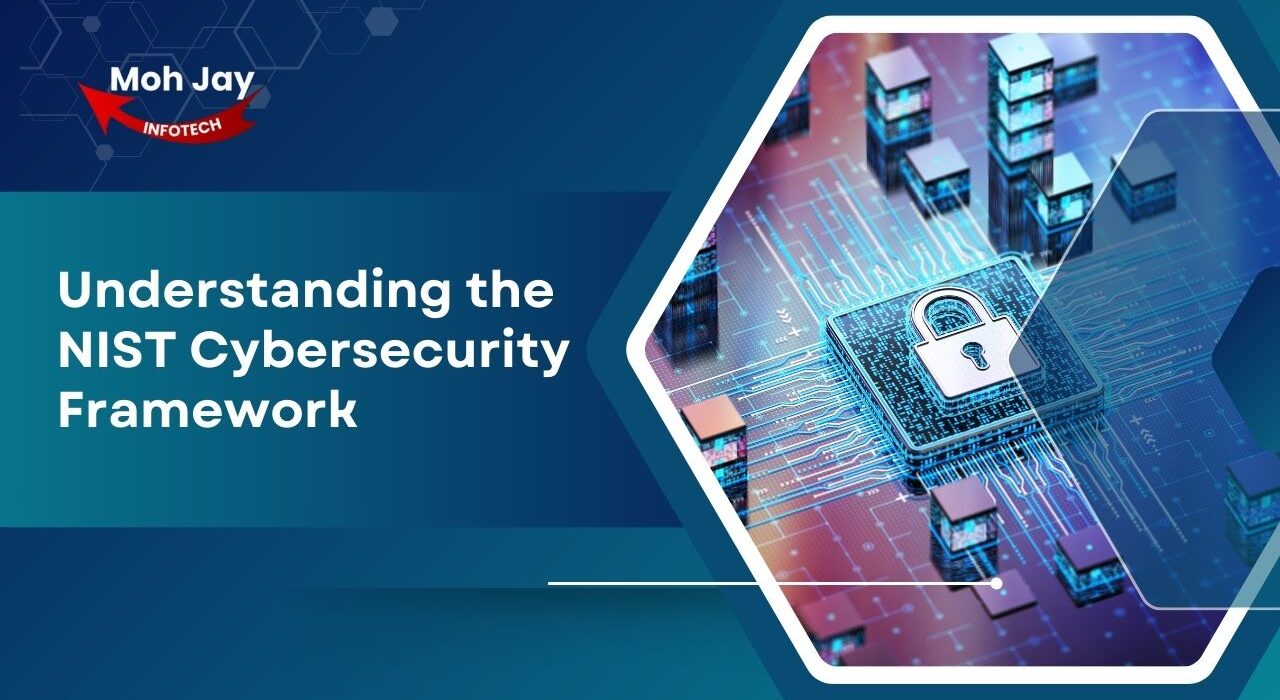In today’s digital-first world, cybersecurity is no longer optional it is a necessity for every business, regardless of size or industry. With the rise in cyber threats, organizations must implement effective security measures to protect their systems, data, and customers. One of the most trusted guidelines that helps companies strengthen their cybersecurity posture is the NIST Cybersecurity Framework (NIST CSF).
This blog will explain what the NIST framework is, why it matters, its core functions, and how businesses can benefit from adopting it.
What is the NIST Cybersecurity Framework?
The NIST Cybersecurity Framework is a set of guidelines developed by the National Institute of Standards and Technology (NIST) to help organizations and businesses manage and reduce cybersecurity risks. First released in 2014, it was designed to provide a common language for managing cybersecurity activities across industries.
The framework is voluntary, meaning organizations are not legally required to follow it, but it has become one of the most widely recognized cybersecurity standards worldwide. Its flexible and risk-based approach makes it suitable for businesses of all sizes, from startups to large enterprises.
Why is the NIST Framework Important?
Cyberattacks are becoming more sophisticated, and businesses face constant threats such as ransomware, phishing, and insider breaches. The NIST framework helps organizations:
- Identify weaknesses in their systems.
- Develop a structured security strategy.
- Protect sensitive data and maintain customer trust.
- Meet compliance requirements with regulations like HIPAA, GDPR, or ISO standards.
By following this framework, businesses can align their cybersecurity practices with global best practices, improving resilience against cyber risks.
Core Functions of the NIST Cybersecurity Framework
The NIST CSF is built around five core functions, often represented as a continuous cycle. These functions are:
1. Identify
This function focuses on understanding your organization’s cybersecurity risks, assets, systems, and data. Key activities include:
- Asset management (hardware, software, and data).
- Risk assessment.
- Business environment analysis.
By identifying potential threats, companies can prioritize resources and develop a stronger foundation for security.
2. Protect
The Protect function is all about implementing safeguards to secure critical assets. It involves:
- Access control policies.
- Data security measures like encryption.
- Employee awareness and training.
- Secure system maintenance.
This step ensures organizations can defend themselves against unauthorized access or malicious attacks.
3. Detect
Since cyber threats evolve rapidly, constant monitoring is crucial. The Detect function involves:
- Continuous security monitoring.
- Intrusion detection systems.
- Event analysis and anomaly detection.
The goal is to quickly spot unusual activities before they cause major damage.
4. Respond
Even with strong defenses, incidents may still occur. The Respond function ensures organizations have a plan to minimize impact. It includes:
- Incident response planning.
- Communication strategies during a breach.
- Forensic analysis to understand what happened.
Quick and effective responses help reduce downtime and financial loss.
5. Recover
The final function focuses on resilience and continuity. Organizations must:
- Restore systems and data after an attack.
- Update security policies based on lessons learned.
- Improve recovery planning for future incidents.
This ensures that business operations return to normal as quickly as possible.
Benefits of Implementing the NIST Cybersecurity Framework
Adopting the NIST CSF provides several advantages, such as:
- Stronger cybersecurity posture: A structured approach to defending against threats.
- Improved risk management: Prioritizing resources based on critical vulnerabilities.
- Better compliance: Many industries use the framework to align with regulations.
- Customer trust: Demonstrating commitment to data protection enhances brand reputation.
- Flexibility: The framework can be tailored to any business model or size.
How Businesses Can Implement the NIST Framework
Implementing the NIST cybersecurity framework doesn’t need to be overwhelming. Here are key steps:
- Assess current security posture – Identify gaps and vulnerabilities.
- Prioritize critical assets – Focus on high-value systems and sensitive data.
- Develop a cybersecurity strategy – Align with the five NIST functions.
- Train employees – Ensure awareness about phishing, password security, and incident reporting.
- Monitor and update regularly – Cybersecurity is an ongoing process, not a one-time setup.
Conclusion
The NIST framework is more than just a guideline it’s a proven roadmap to build a strong cybersecurity foundation. By adopting its five core functions, Identify, Protect, Detect, Respond, and Recover organizations can reduce risks, improve resilience, and safeguard critical assets from evolving cyber threats.
Whether you’re a small business or a large enterprise, embracing the NIST Cybersecurity Framework ensures you stay one step ahead in the fight against cybercrime.
FAQs on NIST Framework
- What is the NIST Cybersecurity Framework?
The NIST Cybersecurity Framework (NIST CSF) is a set of best practices, standards, and guidelines developed to help organizations manage and reduce cybersecurity risks. - Is the NIST framework mandatory?
No, the NIST framework is voluntary. However, many organizations adopt it to improve cybersecurity, meet compliance requirements, and strengthen data protection. - What are the five functions of the NIST framework?
The NIST framework is based on five core functions: Identify, Protect, Detect, Respond, and Recover. Together, they provide a structured approach to managing cyber risks. - Who should use the NIST Cybersecurity Framework?
Businesses of all sizes and industries can benefit from the NIST framework, including small businesses, large enterprises, government agencies, and healthcare providers. - How does the NIST framework improve compliance?
The NIST CSF aligns with global standards and regulations like HIPAA, GDPR, and ISO, helping organizations meet legal and regulatory cybersecurity requirements. - Can small businesses implement the NIST framework?
Yes, the framework is flexible and scalable, making it suitable for startups and small businesses that want to enhance their cybersecurity posture.


